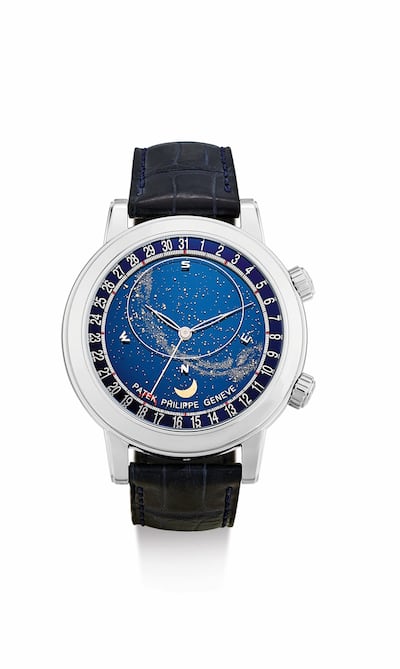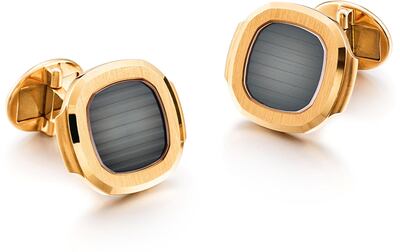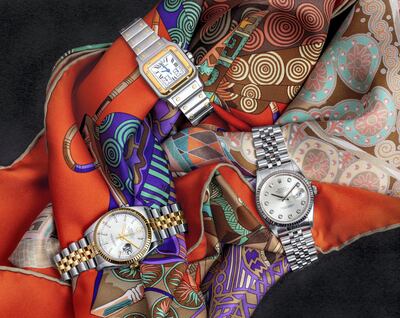There was a time when pre-owned clocks and watches were relegated to the dusty shelves of pawn shops and thrift stores. However, over the past few years, and despite challenges faced by traditional watchmakers, there has been a shift in mindset when it comes to second-hand timepieces in the luxury sector. Collectors are also willing to pay a pretty penny for vintage watches, and a slew of online platforms have recently cropped up to cater to their needs.
In 2018, European financial consultancy Kepler Cheuvreux estimated the global market for second-hand watches was worth $5 billion (Dh18.3bn), adding that the sale of used watches could equal or surpass that of new watches in five years. Closer to home, the UAE wing of auction house Sotheby's realised $2.8 million in its Dubai Watch Sale in November, marking an 8 per cent increase compared with the year before. Times, it would seem, are a-changing.
Why pre-owned watches?
"The pre-owned luxury watch market globally is huge," says Amanda Ellison, president and chief operating officer of WatchBox, a US-based platform for the buying, selling and trading of pre-owned luxury watches, which announced a joint venture with the UAE's luxury watch retailer Ahmed Seddiqi & Sons in November. There are a number of factors that can be credited with this sector's growth, including what Ellison calls the millennial mindset. "These days, there is a lot more interest in sustainability and repurposing. Repurposing watches in this way is also seen as a good thing," she says.
The second-hand market often offers benefits in terms of pricing, too, which is another appealing factor for younger customers, Ellison says. "Entering the pre-owned space allows a customer to acquire luxury goods, but not exactly at a premium price. It offers an alternative that wasn't previously available to the buyer." Of course, sometimes a limited-edition or unavailable model may be more expensive.
Another advantage, then, is that high-end watch collectors have the opportunity to procure pieces that are no longer on the market. Frederic Watrelot, Sotheby’s senior watch specialist in Dubai, says: “Customers looking for something rare and exclusive are realising that anyone can go to a store and buy the latest model, but it’s not easy to find a vintage timepiece. The second-hand market gives them the opportunity to get their hands on a watch that they might have fallen in love with, but is no longer being produced."
Watches that appeal to the Middle East
"Recognising the increase in demand, the JV between WatchBox and Ahmed Seddiqi & Sons has resulted in WatchBox Middle East, the brand's debut retail space that was unveiled in DIFC late last year. WatchBox, which boasts a global inventory of $80m, aims to provide a comprehensive service for a Middle Eastern clientele through this space. Collectors not only have access to pre-owned timepieces, but also can bring their watches in-store to get them valued. The worth of the watch can then be used in exchange for another timepiece, new or pre-owned.
"The reaction since the launch has been fantastic, better than I could have predicted," says Ellison. "We've learnt that Middle Eastern consumers are highly educated, knowledgeable and passionate about their watches. They ask very interesting questions, and come in knowing exactly what they want."
So what exactly does the Middle Eastern consumer want? Watrelot of Sotheby’s says preferences are divided according to age. “Middle Eastern customers have the means to collect and there’s still a lot of bling, a lot of gem-set pieces and yellow gold watches that people are not afraid of buying and wearing,” he says. “However, there is a new generation of collectors who have travelled and seen the trends in London and New York. Younger collectors prefer vintage pieces that are more discreet, while still being very high-end.”
Watrelot has had clients with a specific criteria – for example, watches that were released in a particular year, or timepieces that showcase the evolution of a particular model. He has also had clients purchase pieces to match outfits, especially men for whom a watch serves as the ultimate accessory. While matching a watch's strap to its owner's belt or shoes is common in the West, in the Middle East, there is a fondness for cufflinks that match a certain luxury watch, Watrelot says.
Contradictory to what is customary, women aren't holding back, either. Ellison says there has been tremendous interest from ladies in the UAE when it comes to luxury watches – more so than seen in international markets. "The global watch market can be seen as something of a boy's club, but women in the Middle East are leading the way," she says. Ladies' watches from Rolex, Cartier and Patek Philippe are particularly popular. Watrelot adds that women are also increasingly opting to wear vintage men's watches from the 1970s and 1980s. "They match them with their outfits," he says.
Investing in watches
For both serious and budding collectors, there's nothing quite like finding a watch that goes up in value over the years. Kunal Kapoor, founder of The Luxury Closet, an online store that sells pre-owned fashion items in Dubai, says the UAE has always been a watch collector's market. "This region has a history of bidding for exclusive watches at auctions. We have noticed that our customers have changed the way they shop for full-price products, indicating they check resale value before buying."
Luxury watches, it would seem, are being picked up as much as an investment as for aesthetic or emotional appeal. However, Watrelot cautions there's no clear-cut formula that can predict the investment value of a watch. Instead, collectors should buy pieces they personally enjoy, while still doing their research.
Prices for luxury timepieces are based on a number of factors, including condition, materials, brand and how "complete" the watch is, that is, whether it comes with its original receipt, warranty and other papers. It's vital that the timepiece comes from a trustworthy source, adds Ellison, as some fakes are incredibly well-made and can only be called out as such by experts. In a sense, buying watches online from a trusted source can be safer. "Online platforms also make it easier for customers to search for particular pieces and compare prices," says Kapoor.
When it comes to bidding on watches at auction, Watrelot recommends people read the footnotes and condition reports. "There are specialists all over the world who have done their research and put their knowledge in a catalogue, and it's the best way to learn about that watch. Don't be afraid to speak to an expert or ask for more pictures or information."
Finally, despite fear from some quarters, it looks like the rise of the wearables market – think Apple watches and Fitbits – has done little to dampen this growth. Kapoor says this is because technology-driven gadgets are incomparable to luxury watches. "Fitbits and similar devices are everyday commodities. As technology advances, these gadgets will also evolve or become redundant," he says. "On the other hand, luxury watches are classified as a collectible pieces of art – valued on watch complications, craftsmanship, brand history, provenance, age and more – and can last for 100 years. Collectors don't buy watches to tell the time."






